Unexpected Culprits May Be To Blame For Most Chinook Smolt Losses In Lake WA Ship Canal
Quick, name the nonnative fish species you think is most responsible for chowing down on Chinook smolts trying to make it through a bottleneck near the Ballard Locks?
You’re wrong.
Well, you are if you said either smallmouth or largemouth bass, and if some preliminary work by WDFW’s lead Lake Washington fisheries biologist holds water.
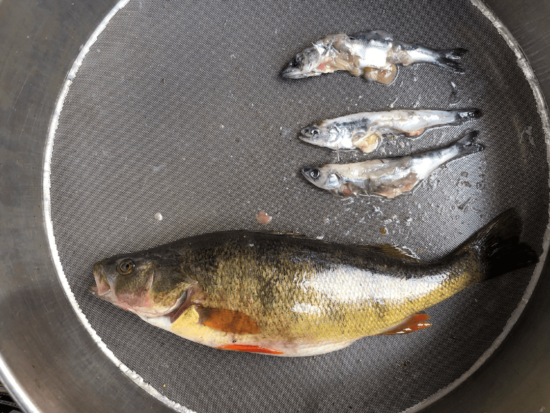
“We are finding that large perch are responsible for most of the predation on juvenile Chinook smolts, at least across the few sites we are monitoring,” said the agency’s Aaron Bosworth this week.
He says that yellow perch and burgeoning populations of recently illegally introduced rock bass are “doing way more damage” than bass are in the Lake Washington Ship Canal.
That’s based on netting Bosworth and his crews have been doing this and the past two years.
They’ve been setting and tending nets in the Montlake Cut, Portage Bay, Fremont Cut and Salmon Bay to figure out roughly how many piscivorous fish are in that stretch, and how much of their diet is comprised of young salmon trying to get to Puget Sound in spring.
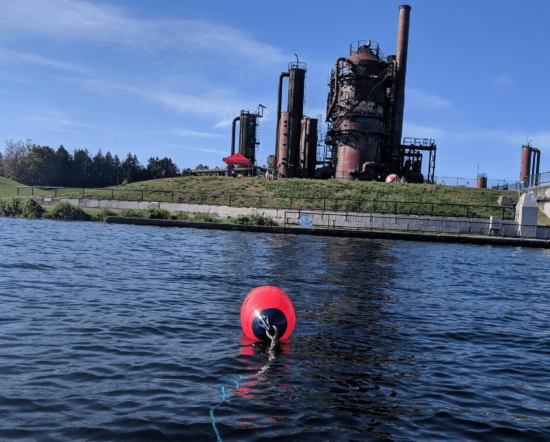
One perch they recently caught was digesting three Chinook smolts.
That fish might have been an outlier, and there’s clear evidence that smallmouth also prey on salmon.
But between those stomach contents and the fact yellowbellies and rock bass make up a surprising 50-plus percent of the net catch, it’s pointing towards unexpected culprits that may be strong and increasing factors depressing salmon survival and thus state and tribal fisheries.
“This is an important — and preliminary — finding, and is slightly different from many existing ideas about which nonnative species are responsible for most of the smolt predation in the Lake Washington system,” Bosworth says.
Where yellow perch were introduced into the Lake Washington watershed a century ago, rock bass are a recent entrant and are originally from the Mississippi and Great Lakes watersheds.
Bosworth says they were “virtually nonexistent” in the ship canal 10 years ago, but are now “very common” at sampling sites.
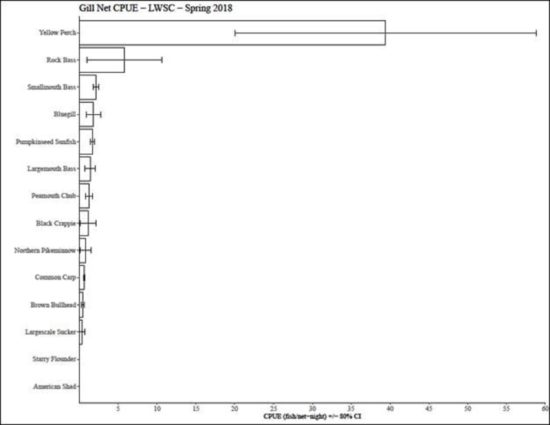
This isn’t the only effort trying to gauge predator populations in the basin. Earlier this year we reported on the Muckleshoot Tribe’s warmwater test fisheries in Lake Sammamish, also meant to figure out if directed gillnetting on spinyrays could be a “commercially viable” enterprise there.
It was scheduled to wrap up June 15. Initial data from March and April showed that just over 53.5 percent of the overall catch of 2,849 fish was comprised of native largescale suckers, followed by introduced smallmouth bass (20 percent) and fellow transplant black crappie (9 percent).
But that was also largely before the release of Chinook and coho from the Issaquah Salmon Hatchery. The percentages and diet may have changed in May and the first half of this month.
(It’s circumstantial, but the mid-May Lake Sammamish Perch Derby catch of just 94 compared to 686 last September may have been related to the flood of young salmon available for the species to eat instead of anglers’ baits.)
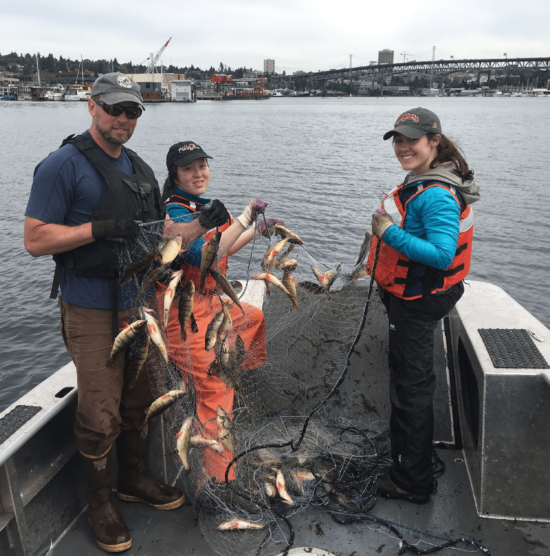
The state’s study in the ship canal and the Muckleshoots’ in Sammamish are both included in what’s known as the LOAF, the 2019-20 List of Agreed Fisheries signed by the Washington Department of Fish and Wildlife and Northwest Indian Fisheries Commission coming out of the annual North of Falcon salmon-season-setting process.
“The comanagers believe that many of the salmon smolts produced at our hatcheries and in natural spawning grounds around the basin are eaten by piscivores as they migrate through the Lake Washington system to marine waters,” states Bosworth.
According to Larry Franks of the Friends of Issaquah Salmon Hatchery, or FISH, just 8 to 10 percent of Chinook make it from the facility’s outlet to Shilshole Bay.
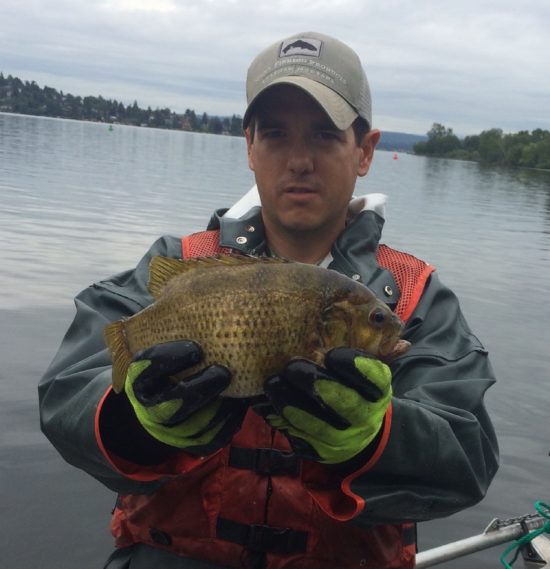
To a degree that’s natural as the young of any species are the most vulnerable to getting eaten, but low numbers of returning finclipped adult Chinook are also increasingly constraining the fishing seasons we can have in Puget Sound and the lakes.
That’s leading to fewer days on the water and growing discontent among anglers.
Bosworth calls the ship canal a “predation gauntlet” filled with “lots of over-water structures that attract a number of piscivorous fish species.”
He says its warm waters could also boost the metabolic rates of the predators, meaning they eat more young Chinook, coho and sockeye as the little fish head for the salt.
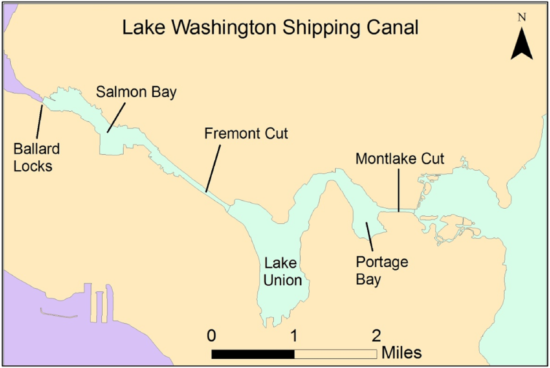
Bosworth does allow that not all known salmon snarfers are showing up in the nets. Set for an overnight soak near the bottom, with all the traffic in the ship canal, they are limited to shoreline areas, not the offshore waters where cutthroat trout may lurk.
Cutts are a strong predator of salmon smolts, as are northern pikeminnow. They’re the primary bane of Lake Washington sockeye.
Again, these are initial results but it builds on a City of Seattle paper citing a 2000 USGS study that listed pikeminnow, smallmouth and largemouth as the primary predators in that order in the ship canal back then.
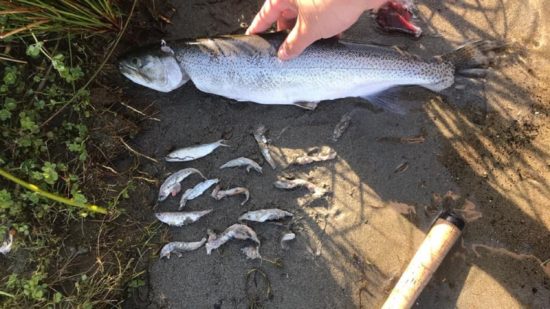
Bosworth says he views this new effort as “an important monitoring program that may help us get a better understanding of why we are seeing such low return rates for salmon in the Lake Washington watershed.”
“I’d really like to expand this type of work in the future to see if this is happening in other areas of the lake as well,” says Bosworth.
The only problem? You guessed it.
Money — it’s tight and getting tighter these days around the biologist’s office.
WDFW had hoped that state lawmakers would approve both its license fee increase and General Fund request this past session for a big $60 million infusion, but in the end there was no hike, it received less than it needed to even maintain fishing and hunting opportunities — and was saddled with added costs without matching funding to boot.
It also must honor commitments it has made with the tribes through past North of Falcons, like continuing the ship canal predator study this year, and hiring more staff “to produce more timely catch estimates from catch record cards,” according to Nate Pamplin, the agency’s policy director.
It has all led to a budget shortfall for monitoring Puget Sound’s hugely important salmon fisheries in the coming two years, but WDFW hopes legislators will fix that with a $1.7 million request they want to include in a supplemental budget request for 2020’s session in Olympia.
So that leaves Bosworth and his project gauging abundance of Lake Washington piscivores and what they’re eating in a bit of limbo.
“I need to figure out how to get other people to help me with the money part. We’ll see how far I get with that idea,” Bosworth says.
Ideally in his mind, it involves a “regional partnership” with other governmental entities and groups with a stake in improving salmon survival.
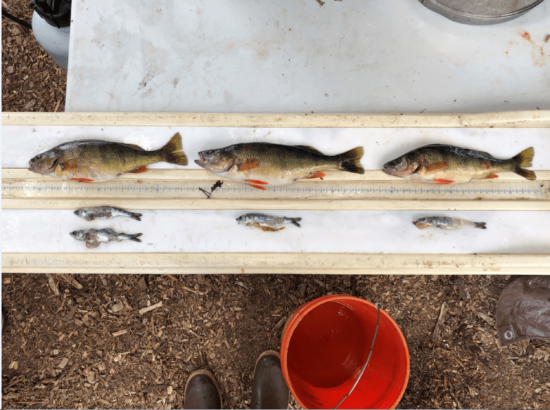
Hell, it could also include anglers.
While there is a consumption advisory out, it sounds to me like Gasworks Park is a pretty damned good place to fish for fat and sassy yellow perch.
With smolts clearing the area soon if not already, I’ll bet they’re getting hungry too.

